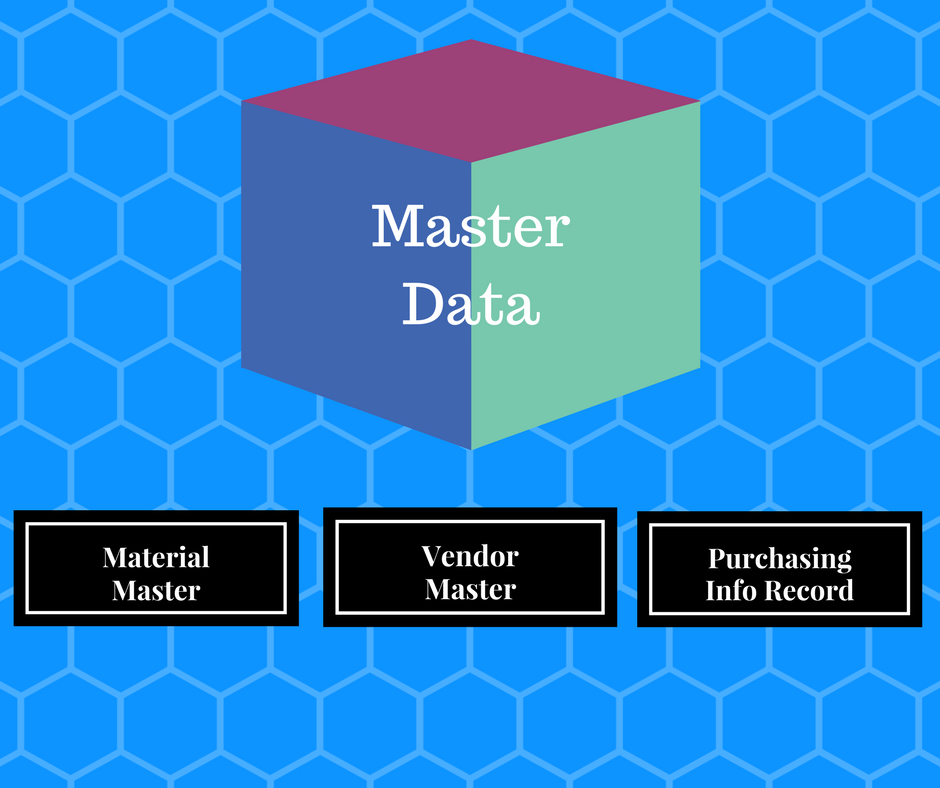
DATA TYPES
The data that the end-users need for carrying out the business activities in the SAP system can be divided into the following three types.
- Configuration Data.
- Master Data.
- Transaction Data.
Configuration Data is made up of data defining the enterprise structure, namely, the Company, Company Code, Plant, Storage Location, etc. This data is configured only once by the SAP consultants in the SAP system at the time of implementation and reused throughout the life of the system usage by the company.
Master Data is the core data that is essential to operations in a specific business or business unit. This data is made up of data pertaining to Material, Vendor / Supplier, Purchasing information, etc. This type of data remains fairly constant in the database for a very long time. This data type is configured by the consultants but created and maintained by the end-users in the SAP system.
Transaction Data is the data that records the day-to-day business information. In other words, data that changes every time a report is created or generated is the transaction data. For instance, in a purchase order document, the purchase order document number, purchase order date, reference / quotation document number, reference / quotation document date, material quantity, amount, tax amount, net amount, and the like make up the transaction data. It is created and maintained only by the end-users in the SAP system.
MASTER DATA
This data can be defined as the set of permanent data which is required to be used by the users to carry out the business activities in the SAP system. This type of data is essential to business process automation / integration in any ERP system. This type of data is created centrally and is available / valid for different processes in the application. This set of data remains fairly constant for long periods of time but need to be changed as required based on various business needs.
In the SAP system, Master Data is divided into the following types.
- MATERIAL MASTER
- VENDOR MASTER
- PURCHASING INFO RECORD
Material Master
Material Master is used to maintain information on all the material / goods / services that an organization deals in or needs for production.
Material master data can be divided into broad common divisions called VIEWS. These VIEWS each pertain to different User Departments based on who all need to use the material. For instance some of the VIEWS commonly maintained for a material can be Basic Data View, Purchasing Data View, Sales Data View, MRP (Material Requirement Planning) or Production Data View, Warehouse Management Data View, Accounts Data View, and others.
Each VIEW in turn consists of different sets of fields grouped logically together called Sub-Screens. For instance, Basic Data View has General Data Sub-Screen, Dimensions / EANs Sub-screen, Packaging Material data Sub-screen, etc.
In each Sub-screen, we maintain individual bits of data called fields, and these fields are in turn linked to different tables which stored the data entered.
Vendor Master

A Vendor / Supplier is a person or entity who / which supplies material or provides service to the company. Vendor Master is used to maintain information about all the vendors an organization deals with. Without a vendor master record, it is not possible to generate / create a Purchase Order.
Vendor Master divides vendors into two basic types – regular and one-time.
A Regular vendor is one from whom the organization purchases on a regular basis whereas one-time vendor as the name suggests is one from whom the organization makes a one-time only purchase.
An important distinction as far as SAP is concerned is in the maintenance of vendor info. Regular vendors will each have unique vendor codes assigned with their all their information (name, address, commodity being purchased, purchase / payment terms, etc.) stored in the database whereas for one-time vendor, only the vendor code, but no other vendor-specific information, is stored in the database.
Purchasing Info Record
Also called as Info Record or simply, PIR, the Purchasing Info Record is a document that includes data pertaining to purchasing a material from a particular vendor for a specific plant location.
About the Author:
This article has been written by one of our Elite tutor’s Samba Siva, He has more than a decade of industry experience in the field of SAP. He has been teaching a lot of students worldwide Uplatz.com.
If you are looking for SAP MM 1:1 instructor-led training with real time experience, Get in touch with us at info@uplatz.com
Uplatz.com is UK based leading marketplace for online 1:1 training courses primarily focused on SAP, Oracle, Big Data.
SAP MM Tutorial
